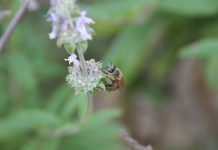
In a revealing study from MIT, scientists have found a new twist in the tale of global deforestation: it’s not just about losing trees, but also about increasing mercury pollution.
This study shows that cutting down forests around the world, from the lush Amazon to the wide savannahs of Africa, is responsible for about 10% of the mercury humans add to the atmosphere each year.
Trees do a lot more than provide oxygen; they’re like nature’s vacuum cleaners for mercury, a dangerous pollutant.
When forests are chopped down, not only do we lose these natural cleaners, but the act of deforestation itself sends mercury into the air. This is especially troubling in tropical regions where the rate of tree loss is high.
The Amazon rainforest, often called the lungs of our planet, is a major player in this process. It’s responsible for soaking up about 30% of the mercury that would otherwise pollute our air.
Saving the Amazon from deforestation could make a big difference in fighting mercury pollution.
MIT’s team, including lead author Ari Feinberg and senior author Noelle Selin, along with international collaborators, dove into this issue by developing a model to understand how deforestation leads to mercury emissions.
Their research, recently published in Environmental Science and Technology, points out a critical area of environmental impact that’s been largely overlooked.
Mercury isn’t just a problem because it’s in the air. The real trouble starts when it lands in our lakes and oceans.
There, it turns into methylmercury, a toxic form that builds up in fish. When people eat these fish, they can get mercury poisoning, which is bad news for our health.
This problem with mercury is a tricky one because it’s been mainly linked to industrial activities like burning coal or small-scale gold mining.
The international Minamata Convention was even set up to reduce these mercury emissions. However, the convention hasn’t focused much on deforestation as a source of mercury.
The MIT team’s study fills in this gap. They looked closely at how forests take in mercury from the air through their leaves. When trees are cut down, not only is this natural cleaning process stopped, but the act of clearing the land, often involving fire, releases even more mercury.
Their findings are startling. Deforestation sends about 200 tons of mercury into the atmosphere each year.
That’s a big deal, making deforestation a major player in human-made mercury emissions. In some tropical countries, the mercury from cutting down trees is a huge portion of their total mercury emissions.
Feinberg notes that if deforestation were a country, it would be the world’s second-largest emitter of mercury, right after China. This highlights the global scale of the issue and the urgent need for policies that protect our forests.
The study not only puts a spotlight on a significant problem but also calls for more research to understand better and tackle mercury pollution from deforestation. Future efforts could include more detailed models that take into account how quickly forests can regrow and continue to fight mercury pollution.
By showing how crucial forests are in keeping mercury out of our environment, this research makes a strong case for protecting and restoring our planet’s green spaces.
It’s a reminder that when we cut down trees, we’re not just losing forests – we’re also opening the door to more pollution that can harm our health and the health of the planet.



